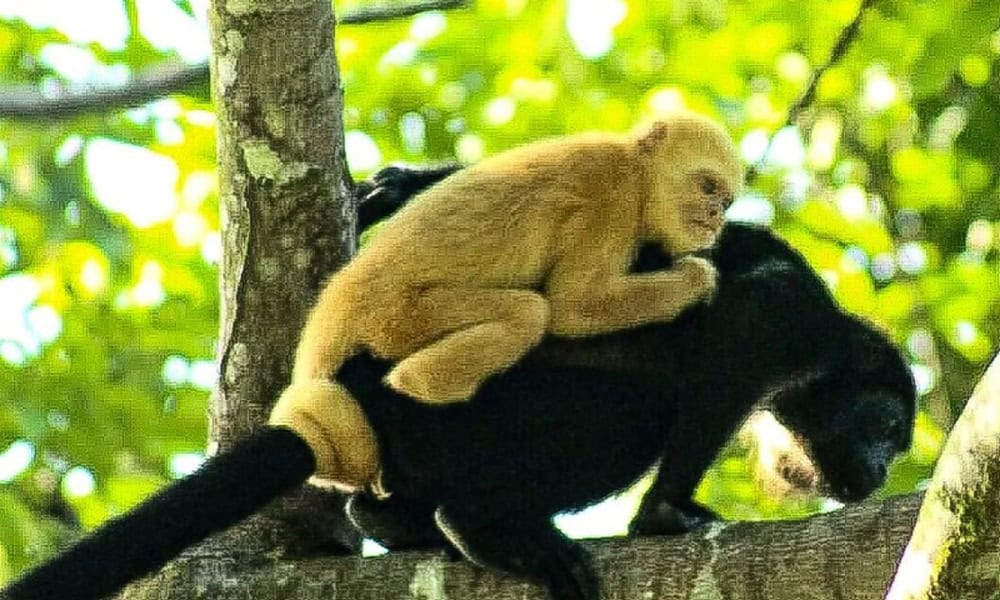The research group from the University of Costa Rica (UCR), led by Dr. Óscar M. Chaves, has been investigating the unusual coloration in howler monkeys (Alouatta palliata) from 2021 to 2023. Typically, these monkeys are black with brown sides, but over the past decade, some have been observed with yellowish or cream patches, rings, or spots on their limbs, fingers, tails, and even lips.
Since 2015, entirely orange or golden howler monkeys have also been spotted, drawing significant attention from the scientific community. Initial speculation linked this abnormal pigmentation to sulfur-based pesticides used in nearby plantations. Dr. Chaves and his team tested this hypothesis through a project titled “Evaluation of the Influence of Pesticides on the Changes in Pigmentation of Howler Monkeys in Costa Rica.”
They collected and analyzed samples of feces, hair, and skin from monkeys with and without abnormal pigmentation using mass spectrometry and molecular analyses. Surprisingly, over 98% of the samples, including tissue samples from the abnormally pigmented animals, tested negative for 78 pesticides analyzed. Only a small amount of chlorothalonil, a fungicide, was found in one sample, leading to the rejection of the pesticide hypothesis.
The team then explored two other hypotheses: high inbreeding due to genetic isolation in fragmented habitats and genetic mutations in melanin biosynthesis genes. Systematic monitoring of howler monkey troops in different regions showed that abnormal pigmentation has a significant genetic component. At least ten females with abnormal pigmentation had offspring with similar traits, though not identical to the mothers.
Dr. Chaves and his team plan to conduct molecular studies to identify the genes associated with this abnormal coloration, although financial constraints pose a challenge. Interestingly, the abnormal pigmentation does not seem to affect the monkeys’ behavior or interactions within their troops.
They appear to be healthy and reproduce normally. One concern is that the yellowish coloration might make these monkeys more visible to predators, though this is difficult to test. Additionally, the lack of eumelanin, which has photoprotective properties, could make these monkeys more vulnerable to UV radiation.
Future research will further investigate the consequences of abnormal pigmentation on howler monkeys’ behavior and survival, aiding in the design of conservation strategies for these animals and their habitats.






